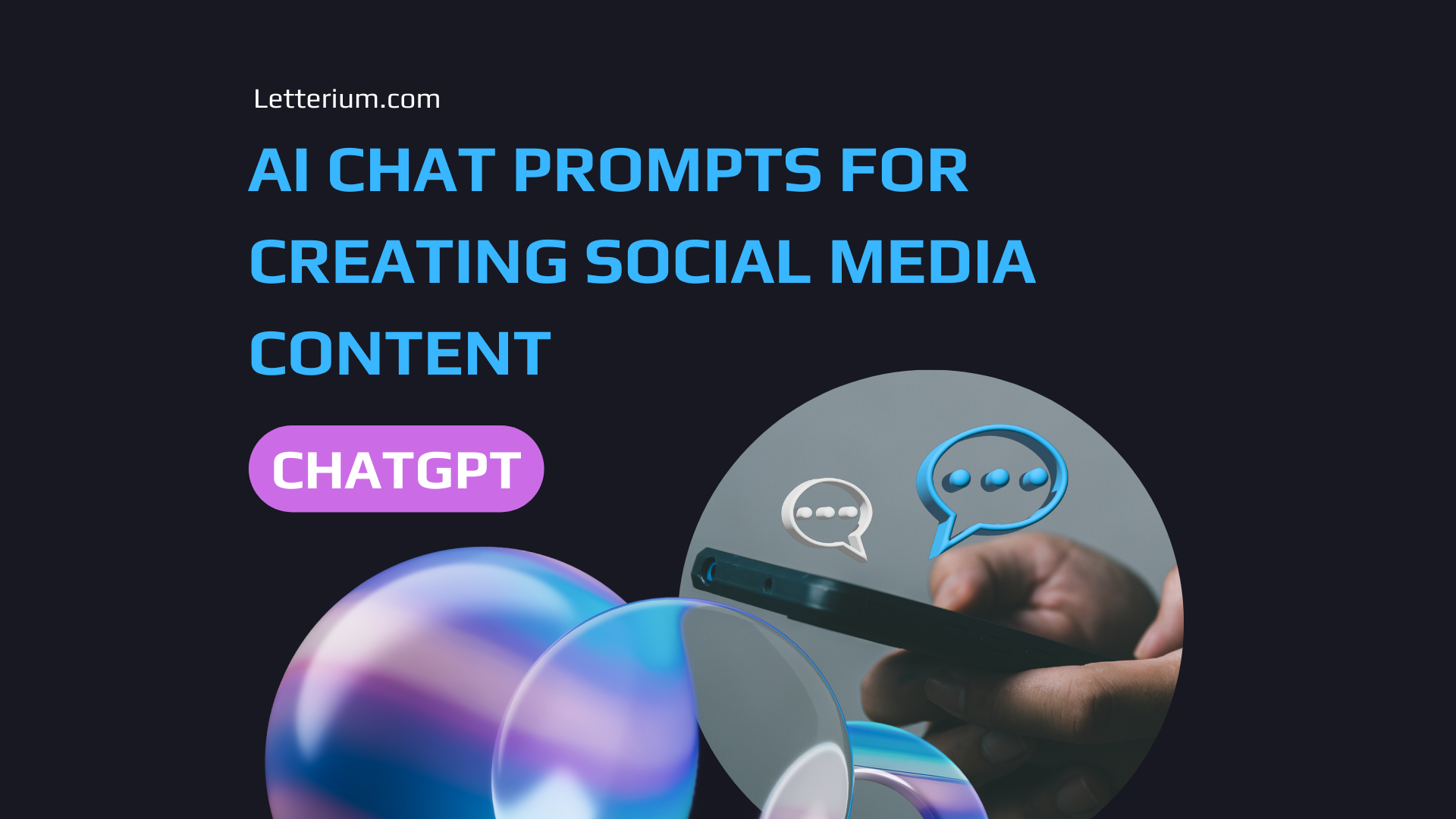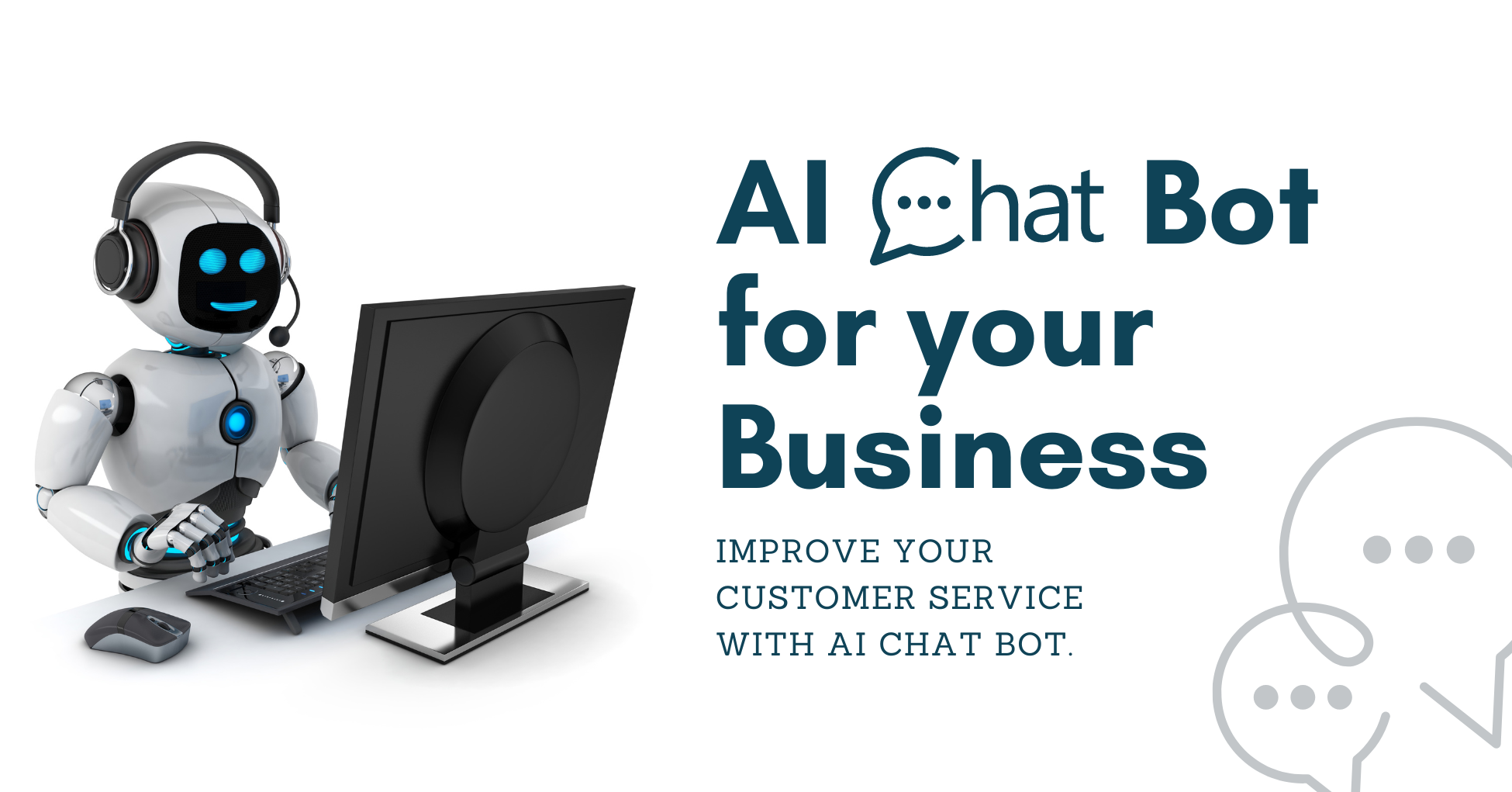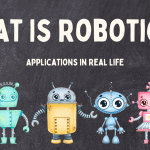In the rapidly evolving world of artificial intelligence, one of the most significant breakthroughs has been the development of ChatGPT by OpenAI. This conversational AI model has transformed how we interact with machines, making digital conversations more human-like than ever before. In this article, we delve into what ChatGPT is, explore its technological underpinnings, and examine its vast array of applications across different industries. From enhancing customer service to revolutionizing educational tools, ChatGPT's impact is widespread, showcasing the versatility and potential of AI technology to reshape our digital landscape.
What is ChatGPT?

ChatGPT is a state-of-the-art language processing AI model developed by OpenAI, known for its ability to understand and generate human-like text based on the input it receives. It is a variant of the GPT (Generative Pre-trained Transformer) architecture, which is designed to produce coherent and contextually relevant text based on a wide range of prompts. This ability makes ChatGPT highly versatile, capable of performing a variety of text-based tasks such as answering questions, composing essays, generating creative writing, summarizing documents, translating languages, and even engaging in dialogue with users in a conversational manner.
The history and development of ChatGPT by OpenAI are part of a broader narrative in the evolution of artificial intelligence, particularly in the domain of natural language processing (NLP) and generation. OpenAI, an AI research lab founded in December 2015, has been at the forefront of advancing AI technologies with the goal of ensuring that artificial general intelligence (AGI) benefits all of humanity. The development of ChatGPT, specifically, is a milestone within OpenAI's research trajectory, highlighting significant advancements in AI's ability to understand and generate human-like text.
History and Development by OpenAI
OpenAI initially gained prominence through its work on various AI models, including OpenAI Five (which demonstrated proficiency in playing the complex strategy game Dota 2) and the GPT series for natural language processing. The GPT (Generative Pre-trained Transformer) series began with GPT-1, introduced in 2018, which showcased the potential of transformers—a type of neural network architecture optimized for handling sequential data, such as text—for generating coherent and contextually relevant text passages.
The subsequent iterations, GPT-2 (released in 2019) and GPT-3 (released in 2020), represented significant leaps forward in terms of the models' size, complexity, and capabilities. GPT-3, in particular, was groundbreaking for its unprecedented scale, with 175 billion parameters, allowing for a level of language understanding and generation that was remarkably sophisticated.
ChatGPT, introduced in November 2022, builds upon the foundation laid by GPT-3, incorporating refinements and training techniques aimed at improving conversational abilities and safety. It is fine-tuned with both supervised and reinforcement learning techniques, where human trainers provide feedback on model outputs to guide its learning process. This approach helps ChatGPT better understand the nuances of human conversation, including context, tone, and intent.
How ChatGPT Differs from Previous AI Models
- Conversational Focus: Unlike its predecessors focused broadly on language tasks, ChatGPT is specifically optimized for dialogue, enabling more natural and engaging conversations with users.
- Safety and Alignment: ChatGPT has undergone additional training steps to reduce harmful outputs and better align with ethical guidelines. This includes efforts to minimize biases, prevent generation of inappropriate content, and ensure responses are thoughtful and contextually appropriate.
- Training Methodology: ChatGPT benefits from an advanced training methodology that combines supervised learning (learning from human-labeled datasets) and reinforcement learning from human feedback (RLHF). This combination allows ChatGPT not only to understand the correct responses but also to refine its approach based on human preferences and feedback, a step beyond the capabilities of earlier models.
- Real-time Feedback and Learning: While ChatGPT does not learn from interactions in real-time after deployment, its development involved iterative feedback loops with human trainers. This process helps it to better mimic human conversational patterns and adapt to a wide range of conversational contexts and styles.
- Application and Accessibility: With the launch of ChatGPT and its integration into various platforms and services, OpenAI has made powerful conversational AI more accessible to developers and businesses, enabling a wide range of applications from customer service bots to educational aids.
In conclusion, ChatGPT represents a significant evolution in the field of AI, specifically in natural language processing and generation. Its development by OpenAI reflects ongoing efforts to create AI that can communicate effectively and empathetically, bridging the gap between human and machine interaction.
The Technology Behind ChatGPT
Natural Language Processing (NLP), Deep Learning, Transformers, and the architecture of the Generative Pretrained Transformer (GPT) series form the core of modern AI systems designed for understanding and generating human language. Below is an overview of each area, illustrating how they contribute to the development of sophisticated models like ChatGPT.
Introduction to Natural Language Processing (NLP)
Natural Language Processing (NLP) is a branch of artificial intelligence that focuses on enabling computers to understand, interpret, and generate human language. NLP combines computational linguistics—rule-based modeling of human language—with statistical, machine learning, and deep learning models. This field enables a wide range of applications, including translation, sentiment analysis, entity recognition, and, importantly, conversational agents like ChatGPT. The goal of NLP is to bridge the gap between human communication and computer understanding, making interactions with machines as natural as speaking with another person.
Understanding Deep Learning and Transformers
Deep Learning is a subset of machine learning that utilizes neural networks with many layers (hence "deep") to model complex patterns in data. In the context of NLP, deep learning models process text in a hierarchical manner, learning to capture semantics, syntax, and context.
Transformers, introduced in the paper "Attention is All You Need" in 2017, are a specific architecture of deep learning models that have revolutionized NLP. Unlike previous sequence-to-sequence models that processed data sequentially (which was time-consuming and inefficient for understanding the context), transformers use a mechanism called "attention" to weigh the relevance of different words in a sentence, regardless of their positional distance from each other. This allows the model to learn contextual relationships between words in a sentence more effectively.
The Architecture of GPT (Generative Pretrained Transformer)
The GPT architecture is built on the transformer model, leveraging its efficient handling of sequence data and contextual understanding. A GPT model is characterized by its large number of parameters (weights and biases) that are trained on vast amounts of text data. These parameters enable the model to generate text that is coherent, contextually relevant, and surprisingly human-like in its syntax and semantics.
GPT models are "pretrained" on a diverse dataset compiled from the internet. This pretraining involves learning to predict the next word in a sentence given the previous words, helping the model to understand language patterns, grammar, and information across various domains.
Training Process and Datasets Used
The training process for GPT models involves two main phases: pretraining and fine-tuning.
- Pretraining: The model is trained on a large corpus of text data. This unsupervised learning phase allows the model to learn a broad understanding of language, including grammar, context, and a wide range of information. The dataset used is typically a large, diverse collection of texts from the internet, encompassing everything from books and articles to websites and social media posts.
- Fine-Tuning: After pretraining, the model can be fine-tuned on smaller, domain-specific datasets. This phase adjusts the model's parameters to perform specific tasks, such as answering questions, writing in a particular style, or understanding specific topics more deeply.
For models like ChatGPT, an additional step of reinforcement learning from human feedback (RLHF) is included, where human trainers rank responses to improve the model's conversational abilities and alignment with human values.
The combination of NLP, deep learning, and transformers, culminating in the architecture and training of GPT models, represents a significant advance in the field of AI, enabling systems like ChatGPT to understand and generate human language with remarkable proficiency.
Key Features of ChatGPT
The development and deployment of conversational AI models like ChatGPT by OpenAI showcase significant advancements in language understanding and generation, personalization, safety, ethics, and continuous learning. These elements are crucial for creating AI systems that are not only technically proficient but also socially responsible and adaptable to the evolving needs of users.

Language Understanding and Generation Capabilities
ChatGPT and similar models possess advanced language understanding and generation capabilities, enabling them to comprehend user inputs and generate coherent, contextually relevant, and engaging responses. This is made possible through the use of deep learning and transformer architectures, which allow these models to process and produce natural language in a way that mimics human conversation. These AI systems can handle a wide range of tasks, from answering questions and providing explanations to generating creative content and engaging in open-ended dialogues.
Personalization and Adaptability in Conversations
Personalization and adaptability are key features that enhance the user experience in conversational AI:
- Personalization: ChatGPT can tailor its responses based on user preferences, history, and the context of the conversation. This personalization makes interactions more relevant and engaging for users, as the AI can remember past interactions (within a session) and adjust its tone, style, or level of detail accordingly.
- Adaptability: These models are designed to adapt to the evolving needs and feedback of users. They can handle a wide range of conversational styles and topics, making them versatile tools for various applications, from educational support to entertainment.
Safety and Ethical Considerations in Design
Safety and ethics are at the forefront of designing and deploying AI models like ChatGPT:
- Content Filtering and Moderation: Mechanisms are in place to prevent the generation of inappropriate or harmful content. This includes filters and guidelines that steer the model away from generating responses that could be considered offensive, biased, or misleading.
- Bias Mitigation: Efforts are made to identify and mitigate biases in AI responses. Given that these models learn from vast datasets that contain human biases, continuous work is needed to reduce the propagation of these biases in AI-generated content.
- Ethical Guidelines: OpenAI and other organizations developing AI technology often adhere to ethical guidelines that prioritize user safety, privacy, and the broader social impact of their technologies.
Continuous Learning and Updates
While models like ChatGPT do not learn from new data or interactions post-deployment in real-time (to maintain predictability and safety), they are subject to continuous improvements and updates:
- Model Updates: Based on user feedback, observed performance, and ethical considerations, AI models are periodically updated. These updates may include training on new data, adjustments to the model architecture, and refinements to improve safety and user experience.
- Research and Development: Ongoing research in AI and machine learning contributes to the development of new models and techniques. This ensures that conversational AI remains at the cutting edge of technology, improving over time in terms of capabilities, safety, and ethical alignment.
The development of AI models like ChatGPT underscores the importance of balancing technical innovation with ethical responsibility and user-centric design. As these technologies continue to evolve, so too will the strategies for ensuring they serve the best interests of individuals and society.
Applications of ChatGPT

ChatGPT, developed by OpenAI, is a versatile AI tool with a broad range of applications across different sectors. Its ability to understand and generate human-like text makes it suitable for various tasks, from automating customer service to aiding in content creation. Here are some of the key applications of ChatGPT:
1. Customer Service and Support
ChatGPT can power chatbots and virtual assistants to handle customer inquiries automatically, providing quick and accurate responses to common questions. This application can significantly improve customer experience by reducing wait times and ensuring 24/7 availability.
2. Education and Learning
In the educational sector, ChatGPT can assist both students and educators. It can provide tutoring, explain complex concepts in simple terms, generate practice questions, and even offer language learning support. Additionally, it can help educators by creating lesson plans, grading assignments, or summarizing educational content.
3. Content Creation and Copywriting
ChatGPT is capable of generating articles, reports, stories, and even poetry. Content creators and marketers can use it to draft content, generate creative ideas, or overcome writer's block. Moreover, it can assist in creating engaging marketing copy, email campaigns, and social media content.
4. Programming and Development Support
Developers can leverage ChatGPT for coding assistance. It can explain code snippets, suggest coding solutions, debug errors, or even write code based on specific requirements. This makes it a valuable tool for both learning programming and accelerating development projects.
5. Language Translation and Localization
ChatGPT's advanced language models enable it to translate text between languages, offering a tool for businesses and individuals to break down language barriers. Furthermore, it can assist in localizing content for different regions, adapting cultural nuances to make translations more accurate and relevant.
6. Business Intelligence and Data Analysis
ChatGPT can summarize reports, analyze data trends, and provide insights from large volumes of data, making it easier for businesses to make informed decisions. It can also generate business documents, such as executive summaries, financial reports, and market research.
7. Healthcare Assistance
In healthcare, ChatGPT can provide patient support by answering common health-related questions, offering information on symptoms and treatments, and even reminding patients about medications. It can also assist medical professionals by summarizing patient data or medical research, thus saving time and improving patient care.
8. Entertainment and Gaming
ChatGPT can create interactive stories, generate game dialogues, or act as a non-player character (NPC) in games, providing a more dynamic and engaging user experience. It can also be used to generate quizzes, puzzles, or other forms of interactive content for entertainment purposes.
9. Legal and Compliance Assistance
It can help in drafting legal documents, summarizing case law, or providing guidance on compliance issues. By automating routine tasks, it allows legal professionals to focus on more complex aspects of their work.
10. Personal Assistants
For individual users, ChatGPT can function as a personal assistant, managing schedules, setting reminders, or even providing recommendations for books, movies, or restaurants based on personal preferences.
The applications of ChatGPT are vast and continue to expand as the model is refined and customized for specific tasks. Its flexibility and capacity for natural language understanding and generation make it an invaluable asset across industries, contributing to efficiency, innovation, and accessibility.
Challenges and Limitations
Addressing biases and inaccuracies in AI responses, ensuring privacy and data protection, and overcoming dependency while reducing unnecessary human interaction are significant challenges in the development and deployment of AI technologies like ChatGPT. These issues are critical for maintaining trust and ensuring the ethical use of AI. Here's how these challenges are being addressed:
Addressing Biases and Inaccuracies in AI Responses
- Diverse Training Data: Ensuring that the data used to train AI models is as diverse and representative as possible can help mitigate biases. This includes data from different cultures, languages, and demographics.
- Regular Audits and Updates: Conducting regular audits of AI responses to identify and correct biases and inaccuracies. Updating the models with corrected data and algorithms can help minimize these issues over time.
- Human Oversight: Implementing a system of human oversight where responses, especially in sensitive areas, are reviewed by humans can help identify and correct biases and inaccuracies that the model may propagate.
Ensuring Privacy and Data Protection
- Data Anonymization: Anonymizing data used for training and interaction with AI models to ensure that personal information is not identifiable.
- Compliance with Regulations: Adhering to global data protection regulations, such as the General Data Protection Regulation (GDPR) in the European Union, which set standards for data privacy and protection.
- Transparency and Consent: Being transparent about how data is collected, used, and protected. Ensuring that users have the ability to provide informed consent for their data's use is crucial.
Overcoming Dependency and Reducing Human Interaction
- Complementary Use: Positioning AI as a tool that complements human abilities rather than replacing them. Encouraging use cases where AI enhances productivity, creativity, or convenience without diminishing the value of human skills and interactions.
- Setting Boundaries: Implementing guidelines and boundaries for AI use, especially in sensitive areas like mental health support, to ensure that AI supplements but does not replace professional human advice and empathy.
- Promoting Digital Literacy: Educating users about the capabilities and limitations of AI to foster a healthy relationship with technology. This includes understanding when it's beneficial to use AI and when it's important to rely on human judgment and interaction.
Moving Forward
As AI technologies continue to evolve, addressing these challenges becomes a continuous process that requires collaboration among developers, policymakers, and users. By prioritizing ethical considerations, transparency, and user empowerment, the development and use of AI can be guided in a direction that maximizes benefits while minimizing potential harms. This approach ensures that AI technologies like ChatGPT contribute positively to society, enhancing capabilities without undermining ethical standards or human values.
The Future of ChatGPT and AI Conversational Models
The future of ChatGPT and AI conversational models looks promising, with rapid advancements expected in technology, application scopes, and ethical frameworks. These developments will likely transform how we interact with machines, augmenting human capabilities and reshaping various industry landscapes.
Potential Developments in AI Technology
- Improved Understanding and Contextual Awareness: Future iterations of ChatGPT and similar models will likely exhibit a deeper understanding of context and nuance in human language. This includes better handling of ambiguity, sarcasm, and complex emotional cues, making AI interactions more natural and effective.
- Multimodal Abilities: Advances in AI will enable conversational models to process and integrate multiple forms of data, such as text, voice, images, and videos. This multimodal approach will allow for richer interactions, where AI can understand and respond to a wider range of human expressions and requests.
- Personalization and Adaptability: AI models will become more personalized, adapting to individual user preferences, learning styles, and needs over time. This personalization will be key in providing more relevant and meaningful experiences to users across different platforms.
Expanding Applications and Industries
- Healthcare: AI conversational models will play a larger role in healthcare, offering support in patient care, mental health services, and medical education. They could assist in diagnosing conditions, providing therapy, and offering personalized health advice.
- Education: In education, AI will offer more personalized learning experiences, adapting to each student's pace and style. It could serve as a tutor, provide language learning support, and help students with special needs by offering tailored educational content.
- Entertainment and Media: AI will create new forms of entertainment and content, from interactive storytelling to generating music and artwork. It will also enable more engaging and personalized media experiences.
- Customer Service: The use of AI in customer service will become more sophisticated, handling complex queries and providing more personalized support across different sectors.
Ethical and Societal Implications of Advanced AI
- Privacy and Data Security: As AI models become more integrated into daily life, ensuring the privacy and security of user data will be paramount. This includes addressing concerns around data collection, consent, and the potential for surveillance.
- Bias and Fairness: The issue of bias in AI models will remain a significant concern, necessitating ongoing efforts to develop fair and unbiased algorithms. This includes ensuring diversity in training data and transparency in AI decision-making processes.
- Employment and the Economy: The impact of AI on the workforce will be profound, automating some jobs while creating new opportunities in others. There will be a need for policies that support workforce transitions and promote the equitable distribution of AI's economic benefits.
- Ethical Use and Regulation: The ethical use of AI will continue to be a topic of debate, focusing on ensuring that AI technologies are developed and used in ways that benefit humanity. This will likely involve the creation of more robust regulatory frameworks and ethical guidelines for AI development and deployment.
In conclusion, the future of ChatGPT and AI conversational models is intertwined with both technological advancements and the broader societal and ethical considerations. As these technologies continue to evolve, they hold the promise of significantly enhancing human capabilities and transforming industries. However, realizing their full potential while navigating their implications will require careful management, ongoing research, and collaborative dialogue among all stakeholders involved.
Conclusion
As we look to the future of ChatGPT and AI conversational models, it's clear that we are on the cusp of a transformative era in human-computer interaction. These technologies promise to redefine the boundaries of what's possible, offering unprecedented capabilities in language understanding and generation, personalization, and multimodal communication. The applications of such AI are vast and varied, extending across industries from healthcare and education to entertainment and customer service, promising to enhance efficiency, creativity, and accessibility.
However, the advancement and integration of AI into our daily lives and global industries come with significant ethical and societal considerations. Issues such as privacy, data security, bias, and the impact on employment highlight the need for a balanced approach to AI development and deployment. Ensuring that these technologies are developed with ethical considerations at the forefront, and are accessible and beneficial to all, will be crucial.
The future of AI, particularly conversational models like ChatGPT, lies in not just technological innovation but in the cultivation of an ecosystem that values ethical standards, promotes inclusivity, and encourages collaboration among technologists, policymakers, and users alike. As we navigate the challenges and opportunities ahead, the focus must remain on leveraging AI to augment human capabilities and enrich lives, while actively addressing the ethical dilemmas and societal impacts that come with such profound technological change.
In conclusion, the journey of AI from a novel technological experiment to a fundamental component of our digital lives is ongoing. The potential of ChatGPT and similar AI models to drive positive change is immense, but realizing this potential will require concerted efforts to ensure that advancements in AI are aligned with the broader goals of society. As we continue to explore the frontiers of artificial intelligence, the dialogue between innovation and ethics, between possibility and responsibility, will shape the future of this exciting and evolving field.
Read more:


 English
English 
